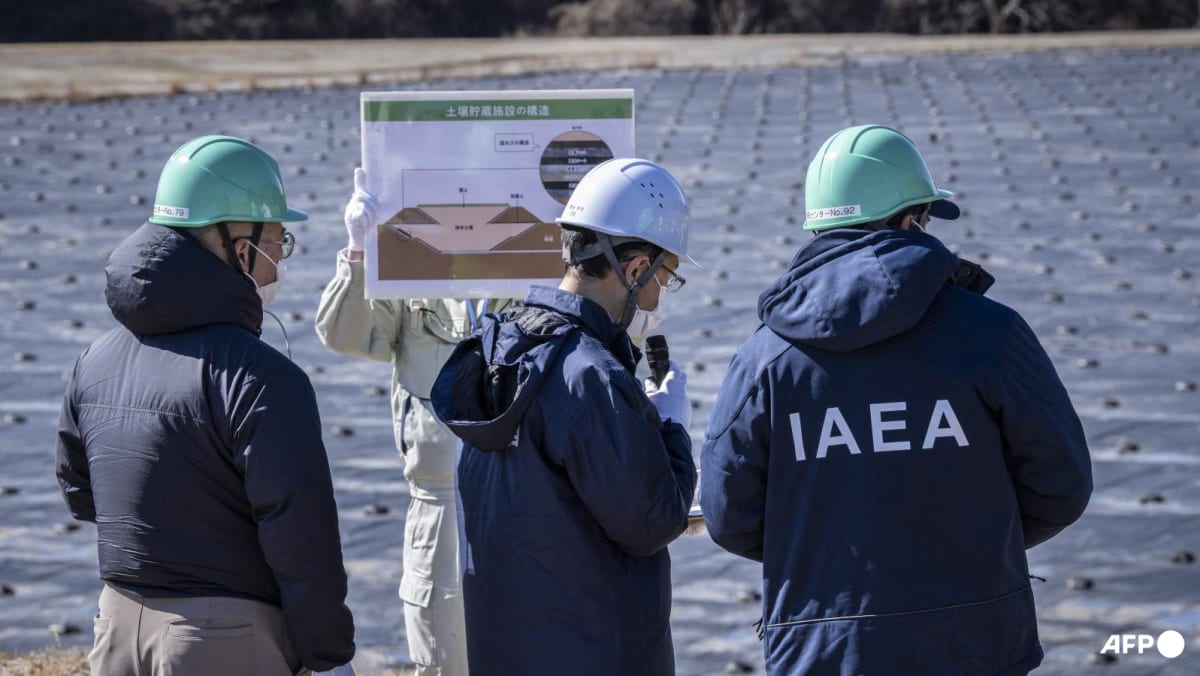Asia
UN watchdog chief visits Fukushima as Japan returns to nuclear power

Introduction: A New Chapter in Japan’s Energy Policy
The Fukushima Daiichi Nuclear Power Plant, once a symbol of Japan’s commitment to nuclear energy, became a landmark of tragedy in 2011 after a devastating earthquake and tsunami triggered one of the worst nuclear disasters in history. In February 2023, as the world continued to grapple with the consequences of that disaster, the plant found itself at the center of attention once again. Rafael Grossi, the head of the International Atomic Energy Agency (IAEA), visited the site on February 19, just one day after Japan’s government approved a new energy plan that signaled a significant shift in the country’s energy strategy. This plan reflects Japan’s decision to return to nuclear power to meet the growing energy demands of its rapidly expanding artificial intelligence (AI) and microchip manufacturing industries. The move marks a departure from earlier pledges to reduce reliance on nuclear energy, and it has sparked both hope and concern among experts and citizens alike.
The Fukushima Disaster and Its Legacy
On March 11, 2011, a magnitude 9.0 earthquake struck off the coast of Japan, triggering a massive tsunami that inundated the Fukushima Daiichi Nuclear Power Plant. The disaster resulted in the deaths of 18,000 people and caused a series of equipment failures and radioactive material releases, leading to the worst nuclear accident since the Chernobyl disaster in 1986. The plant’s decommissioning process, which is expected to take decades, has been a monumental task. The most critical and dangerous part of this process lies ahead: the removal of approximately 880 tonnes of radioactive debris from the reactors. This challenging endeavor has made Fukushima a focal point for international attention and cooperation, with the IAEA playing a key role in monitoring and supporting Japan’s efforts.
Japan’s Shift Toward Nuclear Energy
Rafael Grossi’s visit to Japan coincided with a significant shift in the country’s energy policy. On February 18, 2023, Japan’s cabinet approved a Strategic Energy Plan that outlined a renewed commitment to nuclear power as part of the nation’s energy mix. This decision represents a reversal of earlier promises to "reduce reliance on nuclear power as much as possible." Under the new plan, nuclear energy is expected to account for approximately 20% of Japan’s energy supply by 2040, up from 5.6% in 2022. While the plan aims to make renewable energy the country’s top power source by 2040, the increased focus on nuclear power reflects the growing energy demands of Japan’s advancing AI and microchip industries, which require reliable and consistent power sources.
The Paradox of Restarting Nuclear Energy
The decision to expand Japan’s reliance on nuclear power comes at a time when the country is still grappling with the aftermath of the Fukushima disaster. The decommissioning process is not only technically complex but also emotionally fraught, as many Japanese citizens remain skeptical of nuclear energy’s safety. Rafael Grossi acknowledged this tension during his visit, emphasizing the importance of safety and public trust. "At a moment where Japan is embarking on a gradual return to nuclear energy in its national energy mix, it is important that this is also done in complete safety and with the confidence of society," he said after meeting with Japan’s foreign minister. The challenge for Japan will be to balance its energy needs with the concerns of its citizens, ensuring that the lessons of Fukushima are not forgotten.
The Ongoing Decommissioning Efforts
During his visit, Grossi toured the Fukushima Daiichi site, including the vast "interim" soil storage facilities, which he viewed for the first time. These facilities are part of a massive cleanup effort that has involved removing harmful radiation from the surrounding land. Workers have scraped up approximately 13 million cubic meters of soil and 300,000 cubic meters of ash from incinerated organic material—enough to fill 10 stadiums. The contaminated material is stored in large black bags, some of which are stacked in snow-covered areas near the plant. Despite the progress made, the most dangerous part of the decommissioning process—removing radioactive debris from the reactors—still lies ahead. This task is expected to take decades and will require cutting-edge technology and international collaboration.
A Future Defined by Radiation and Renewal
As Japan moves forward with its new energy plan, the country is at a crossroads. The return to nuclear power offers the promise of meeting growing energy demands and supporting its technological ambitions, but it also carries risks that cannot be ignored. The ongoing decommissioning of Fukushima Daiichi serves as a stark reminder of the potential consequences of nuclear power, even as the nation seeks to harness it once again. The storage facilities near the plant, with their rows of black bags and radiation level signs, are a testament to the enduring impact of the 2011 disaster. As Japan navigates this complex landscape, the words of Rafael Grossi remain a guiding principle: safety, transparency, and public trust must be at the heart of every decision. The story of Fukushima is far from over, but it serves as a poignant reminder of the delicate balance between progress and caution in the nuclear age.











